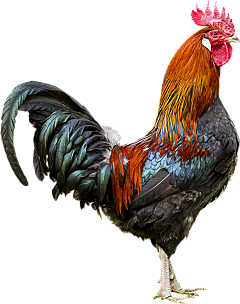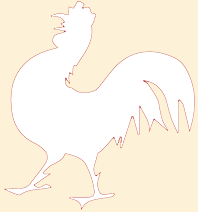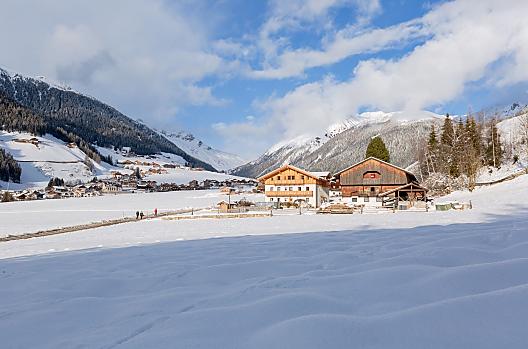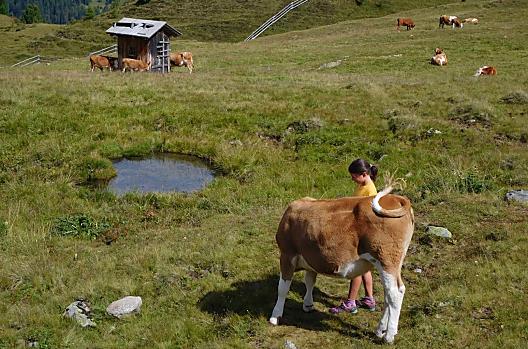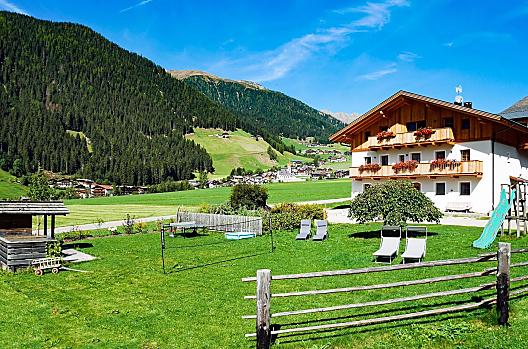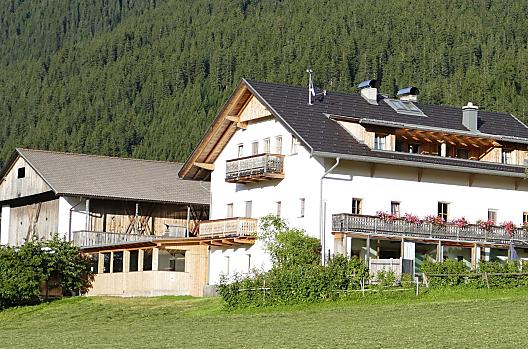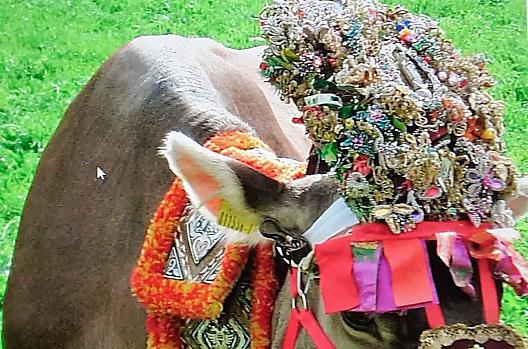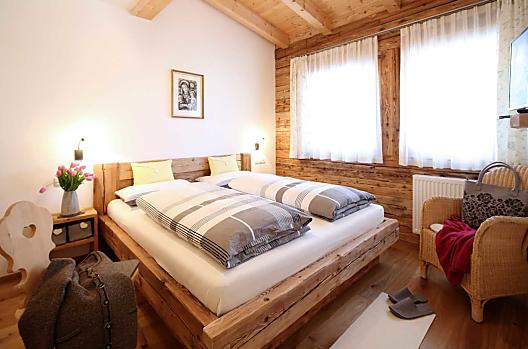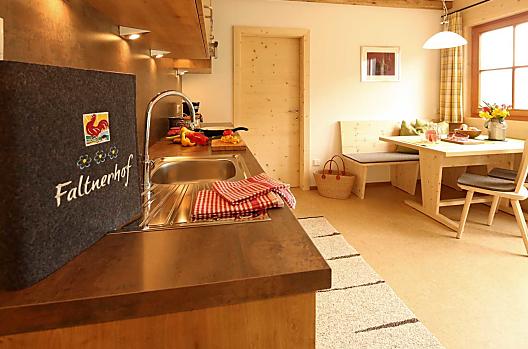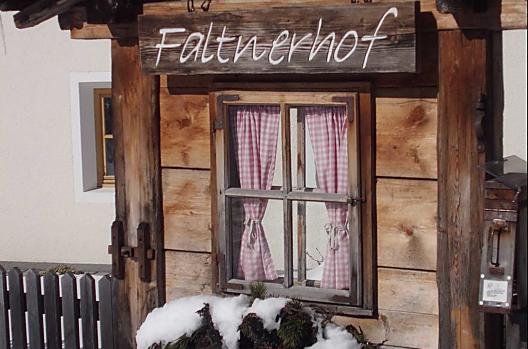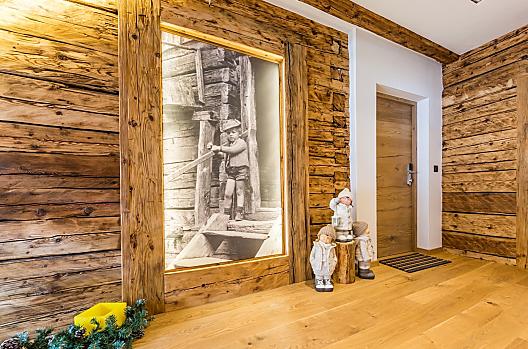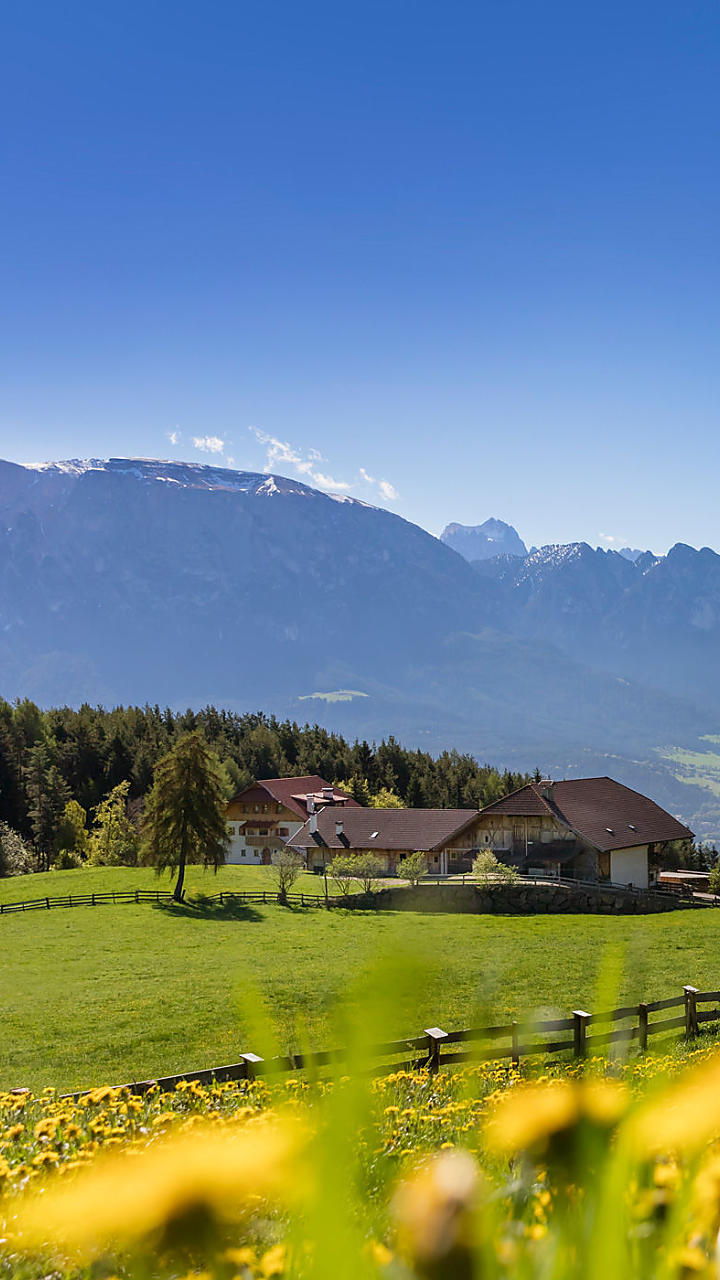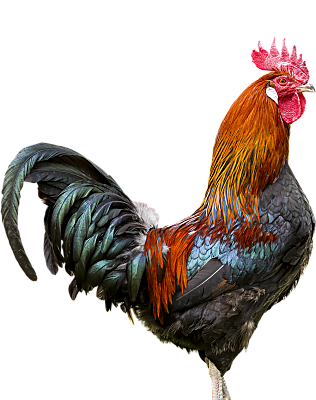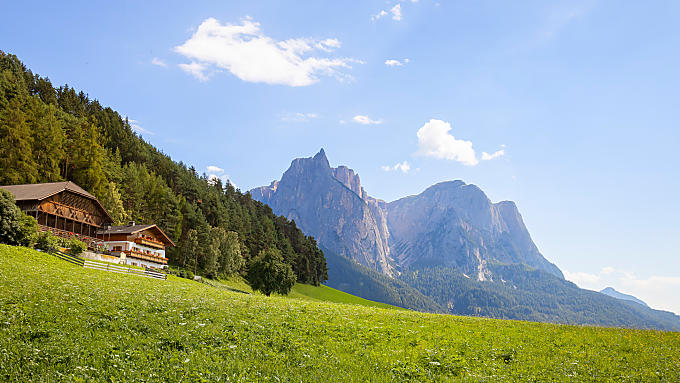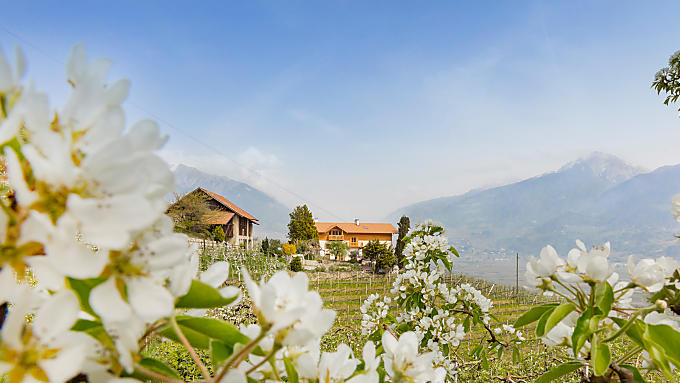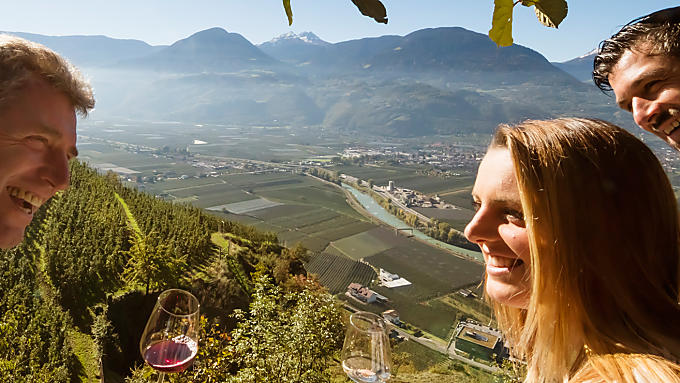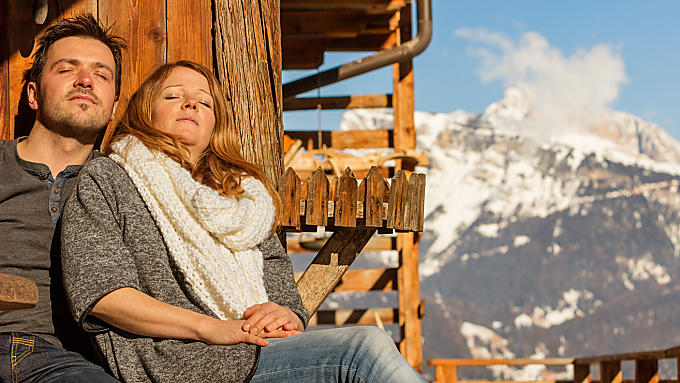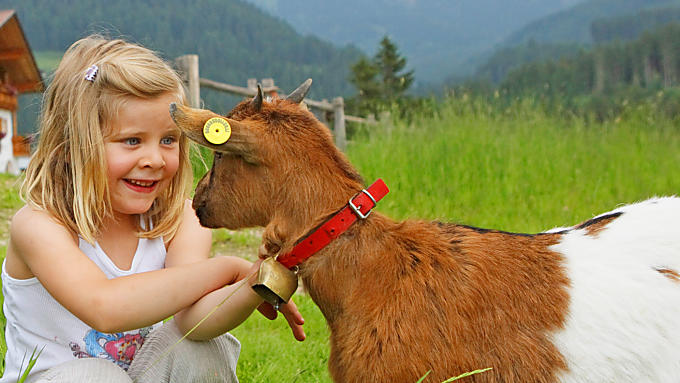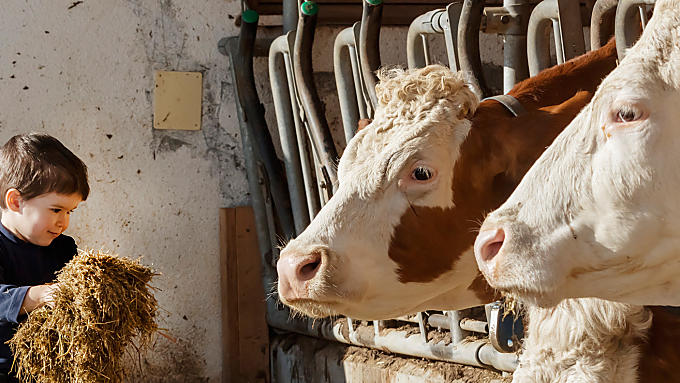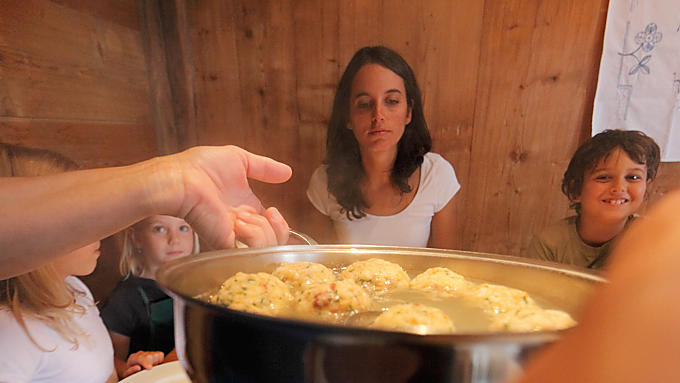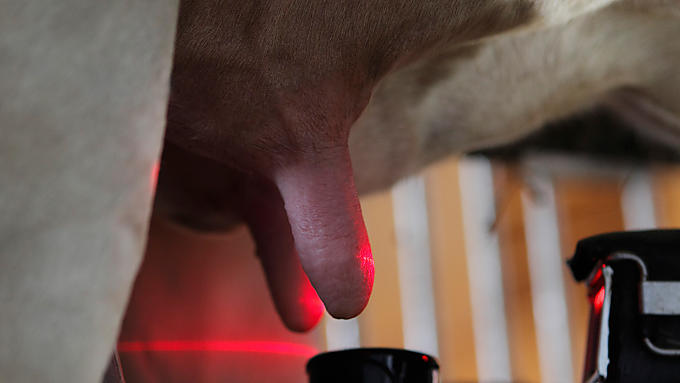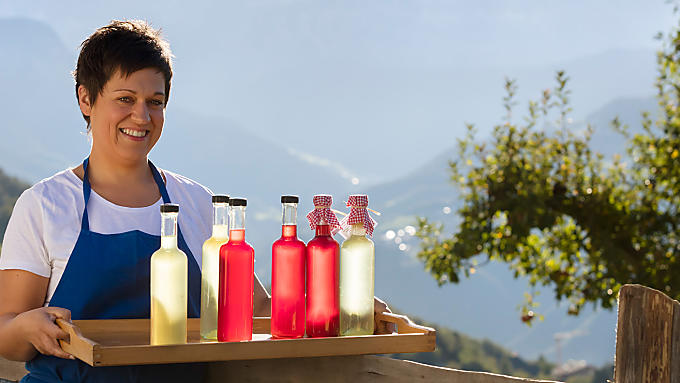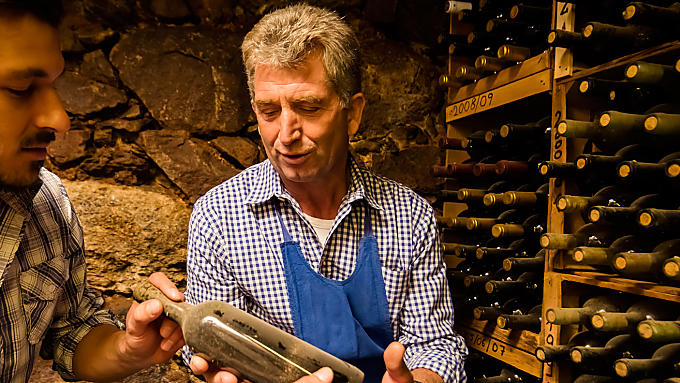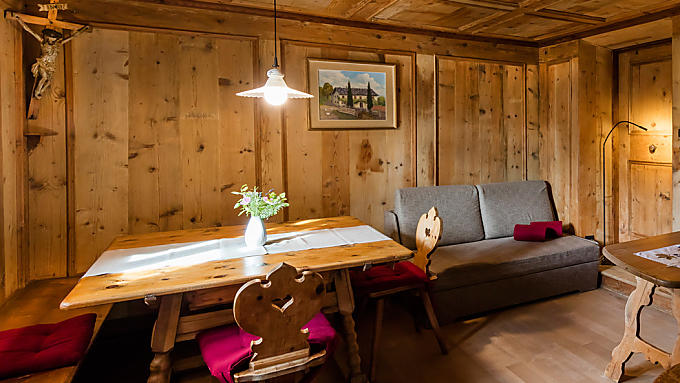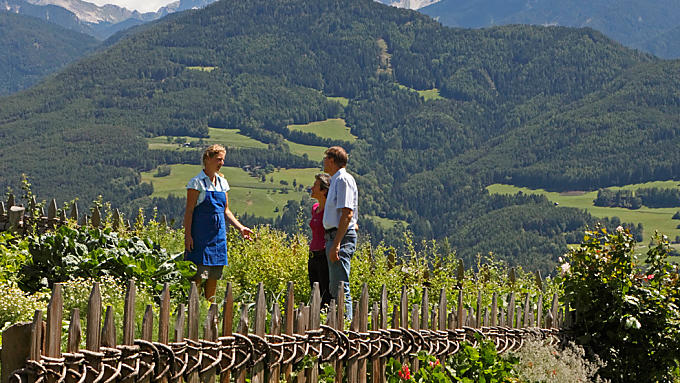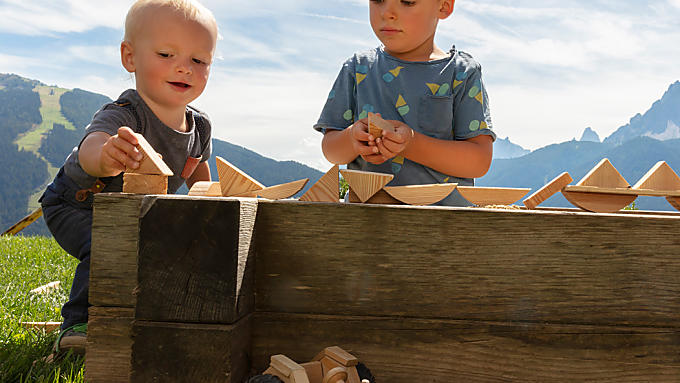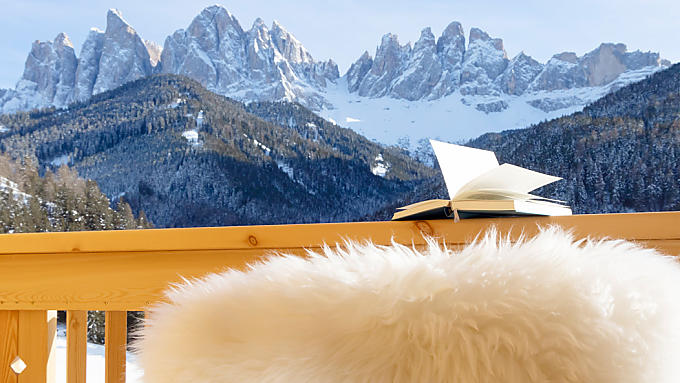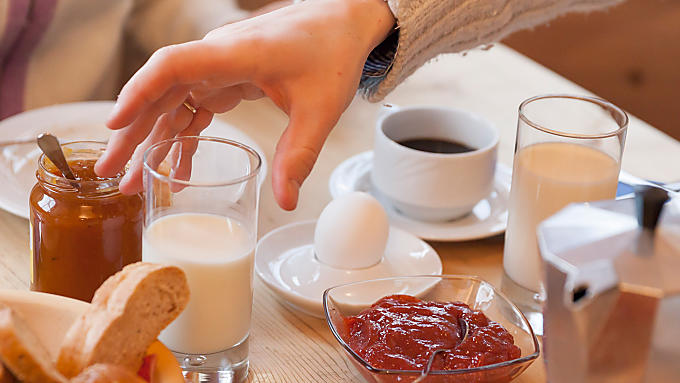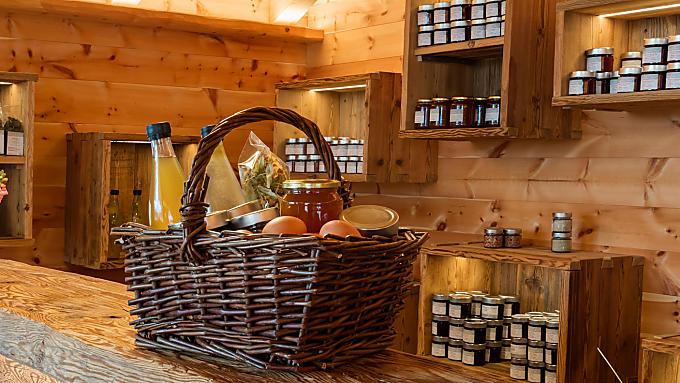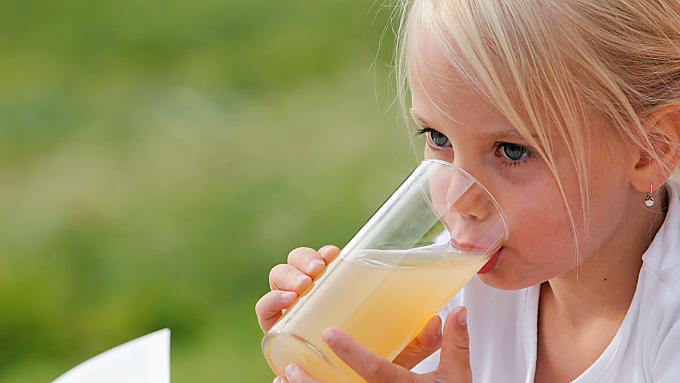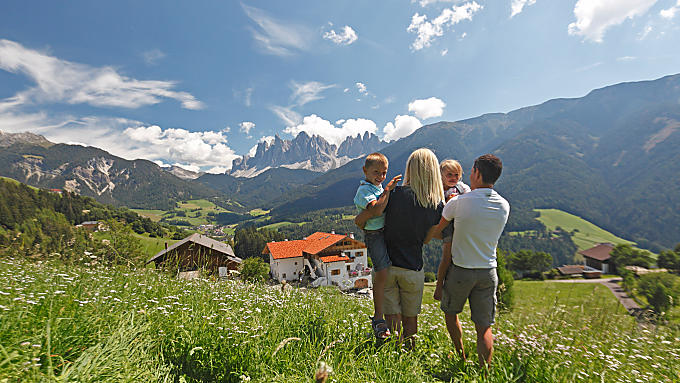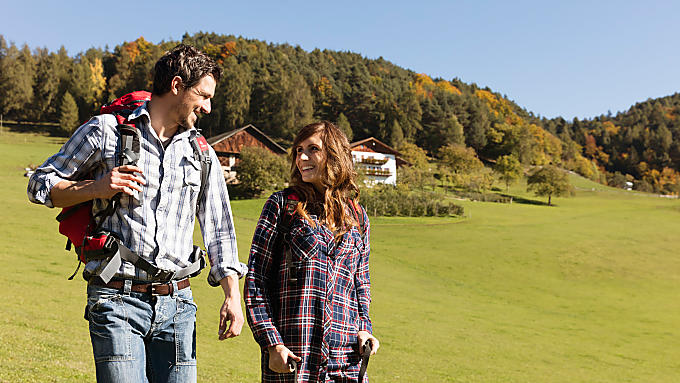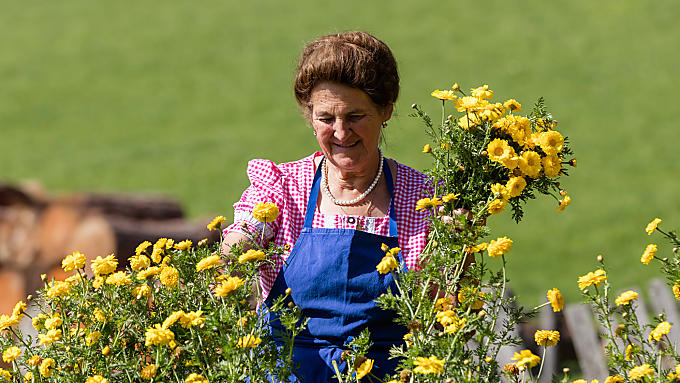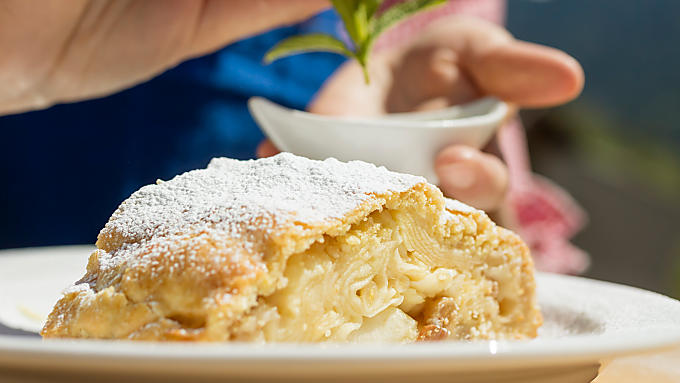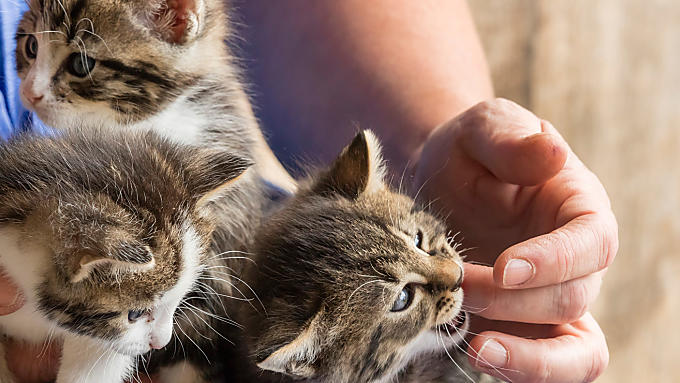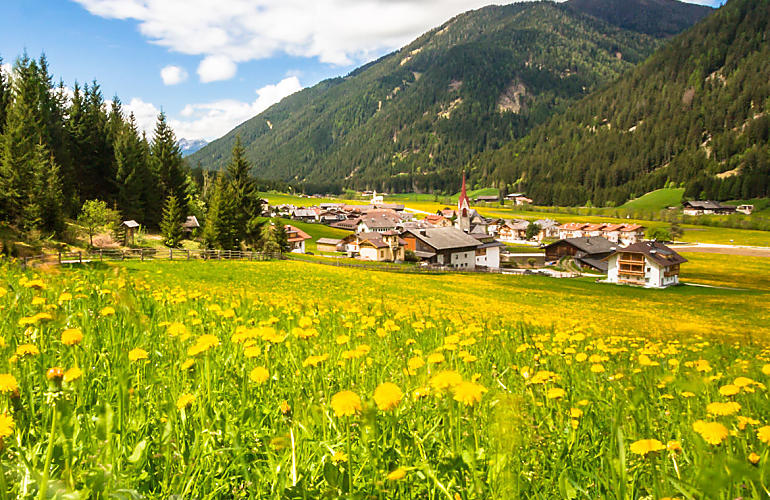
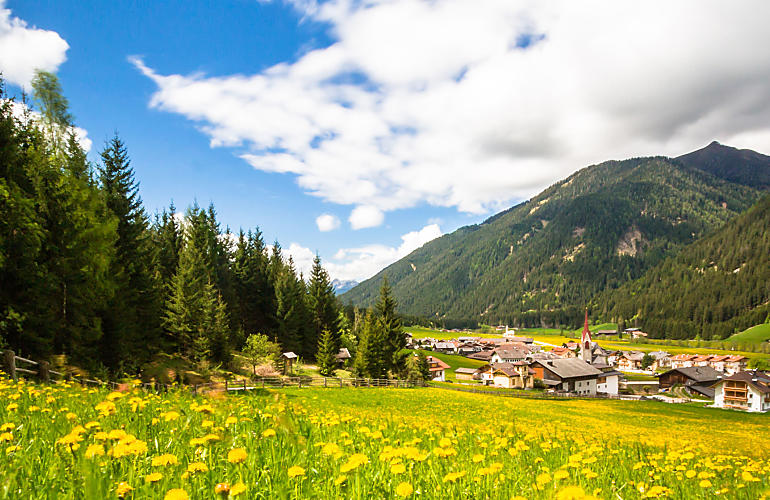
Actively relaxed
Holiday location
Farm Holidays in Gsiesertal
Unspoilt landscape amidst the foothills of the Rieserferner group and the Defregger Alps guarantee a relaxed Farm Holiday in Gsiesertal.
Gsiesertal valley is around 22 km long. It branches off from Pustertal valley in the northeast direction and has lots of uninhabited side valleys. The valley basin of Gsiesertal is wide and very sunny. On the slopes to both sides there is dense forest. The start of the valley still belongs to the municipality of Welsberg-Taisten. The parish of Gsiesertal takes up most of the valley, and the main village is St. Martin. The highest-lying farmhouses are in Obertal valley, while other farms and hamlets are scattered all over the valley.
Unspoilt landscape amidst the foothills of the Rieserferner group and the Defregger Alps guarantee a relaxed Farm Holiday in Gsiesertal.
Gsiesertal valley is around 22 km long. It branches off from Pustertal valley in the northeast direction and has lots of uninhabited side valleys. The valley basin of Gsiesertal is wide and very sunny. On the slopes to both sides there is dense forest. The start of the valley still belongs to the municipality of Welsberg-Taisten. The parish of Gsiesertal takes up most of the valley, and the main village is St. Martin. The highest-lying farmhouses are in Obertal valley, while other farms and hamlets are scattered all over the valley.
Winter fun
Active winter sports fans will mostly appreciate Gsiesertal valley because of its 40 kilometres of cross-country ski pistes that cater for all requirements and are a sight for sore eyes. Family-friendly ski lifts, such as St. Magdalena lift, make a Farm Holiday in Gsiesertal a pleasant mix of relaxation and movement. But even if you are without cross-country ski equipment, you don't have to stay indoors by the fire, but can choose between walks, ski tours or snow shoe walks starting right from your holiday flat or room. In winter, this sleepy valley livens up for a few days each year: the popular 'Gsiesertal Lauf' skiing marathon, which has not once been cancelled because of lack of snow, has taken place here since 1984. The race attracts thousands of spectators and sportspeople to the parish and is one of the most popular races in the Alpine area. Over 30 countries take part each year. For those wishing to ring the changes, the neighbouring winter sports eldorado, Antholzer Tal valley, as well as Olang lower terminal cable car station for Kronplatz ski slopes, are just a short drive away.
Tour of mountain pasture huts
Once a year, the keepers of mountain huts invite guests for a 'Marende', or light meal. A total of 40 huts on the pastures of Gsiesertal valley celebrate the end of summer with the so-called 'Gsieser Almhüttenfest'. All that is needed really is good weather. Whether it's a hearty goulash with polenta or something sweet like 'Strauben' funnel cake or 'Krapften' fried pastries, you'll be taken good care of to hearty music amidst lush green meadows in the fresh mountain air at around 1,800 metres above sea level. You can walk from pasture to pasture and try some of all the rural delicacies. On a Farm Holiday in Gsiesertal, you're practically obliged to enjoy the good food.
Winter fun
Active winter sports fans will mostly appreciate Gsiesertal valley because of its 40 kilometres of cross-country ski pistes that cater for all requirements and are a sight for sore eyes. Family-friendly ski lifts, such as St. Magdalena lift, make a Farm Holiday in Gsiesertal a pleasant mix of relaxation and movement. But even if you are without cross-country ski equipment, you don't have to stay indoors by the fire, but can choose between walks, ski tours or snow shoe walks starting right from your holiday flat or room. In winter, this sleepy valley livens up for a few days each year: the popular 'Gsiesertal Lauf' skiing marathon, which has not once been cancelled because of lack of snow, has taken place here since 1984. The race attracts thousands of spectators and sportspeople to the parish and is one of the most popular races in the Alpine area. Over 30 countries take part each year. For those wishing to ring the changes, the neighbouring winter sports eldorado, Antholzer Tal valley, as well as Olang lower terminal cable car station for Kronplatz ski slopes, are just a short drive away.
Tour of mountain pasture huts
Once a year, the keepers of mountain huts invite guests for a 'Marende', or light meal. A total of 40 huts on the pastures of Gsiesertal valley celebrate the end of summer with the so-called 'Gsieser Almhüttenfest'. All that is needed really is good weather. Whether it's a hearty goulash with polenta or something sweet like 'Strauben' funnel cake or 'Krapften' fried pastries, you'll be taken good care of to hearty music amidst lush green meadows in the fresh mountain air at around 1,800 metres above sea level. You can walk from pasture to pasture and try some of all the rural delicacies. On a Farm Holiday in Gsiesertal, you're practically obliged to enjoy the good food.
Farm search
Holiday farms in Gsiesertal
3 reasons
A holiday in Gsieser Tal
Gsieser Tal for over
40 km of cross-country runs
Rustic, quiet
and tranquil side valley
Hiking enjoyment along
Gsies mountain pastures
No Easter without an ox
Over 200 years ago, gourmets enthused about the tender flesh of Gsiesertal oxen. It is said that even the Emperor was served it at Easter in the Vienna Court.
Over 200 years ago, gourmets enthused about the tender flesh of Gsiesertal oxen. It is said that even the Emperor was served it at Easter in the Vienna Court.
Its good quality was thanks to the fattening process. Farmers drove their cattle to market at Easter through Gsiesertal valley until St. Lorenzen in Pustertal valley to sell it there. There, big arguments often broke out between the butchers as to who would get the best ox. The auctioned animal was then adorned festively and led through the alleyways. After the Second World War, this tradition fell into obscurity, until it was picked up on again in the past twenty years. Today, up to 700 kilogrammes of heavy oxen are auctioned in St. Lorenzen each year and prepared at Easter in the kitchens of the inns and restaurants in accordance with age-old recipes.

